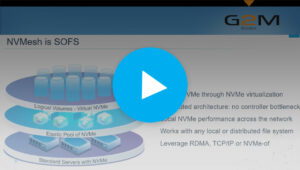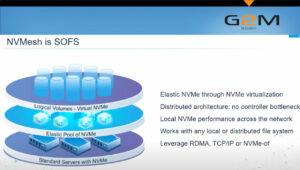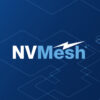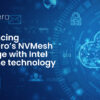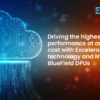
Whether you call it the scale-out flash storage market, or software-defined storage, organizations are rapidly embracing new storage options driven by a smart software layer that are vastly more scalable, flexible, performant and lower cost.
Excelero highlighted three innovations in the scale-out flash storage (SOFS) market last week in a Webinar sponsored by G2M Research. As an early mover in this sector with extensive customer deployments, our team loves watching the dynamics in the market, how new technologies enable new applications or use cases, which in turn will demand more new technologies.
In case the acronym is new, SOFS refers to software and servers, usually with NVMe Flash, that usually run under a single name space. The demand for AI, ML, high performance computing (HPC) and scale-out databases is driving a wholesale change to data center architectures. 
SOFS solutions are tailored to modern datacenters that are increasingly running data-intensive workloads. These data centers are often doubling the demand for storage and processing capacity every 18 months – while budgets are not keeping up.
SDS and SOFS have changed the calculus of deploying storage solutions. With storage as the backbone of everything, this is what, in our view, this new generation of storage, enables or should enable: maximize ROI across the data center by maximizing NVMe utility, reducing hardware to run applications, maximizing GPU utilization.
Innovation drives innovation. This week’s webinar highlighted three innovations that may further transform scale-out flash storage – with significant upside for customers.
Let us help you maximize your ROILet us help you maximize your ROI
GPU computing has raised expectations for storage performance and ROI.
While Excelero’s NVMesh has been deployed across many verticals for a plethora of use cases, the explosive growth of artificial intelligence use cases across verticals – and the fact AI workflows runs almost exclusively on GPU systems – is raising stakes and expectations for high throughput and low latency.
As Excelero’s work with scale-out web use cases involving some of the largest CSP companies as design partners, the requirements of GPU-based use cases are almost word for word the advantages enabled by SDS and SOFS:
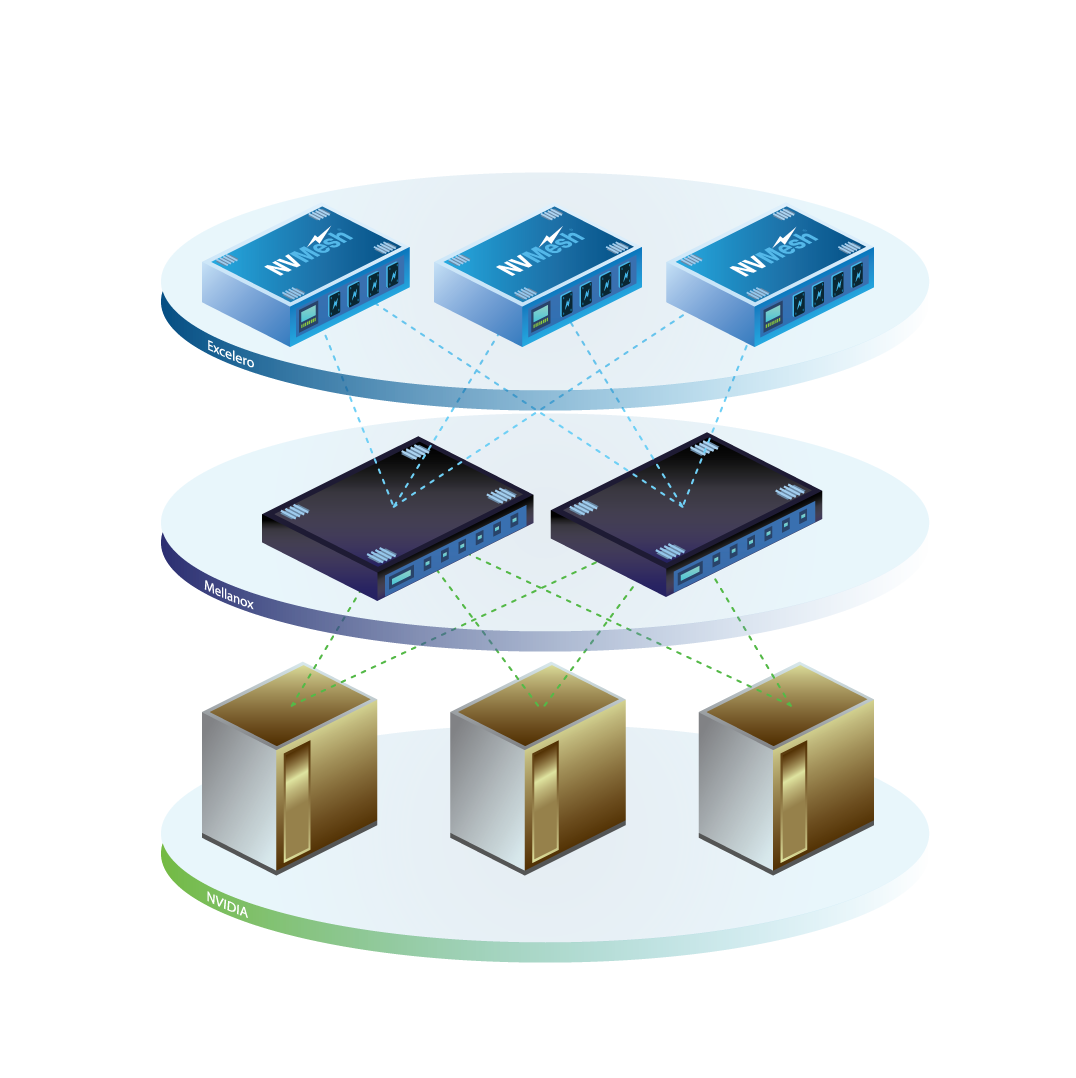 * Data to bypass CPUs – avoid CPU & GPU
* Data to bypass CPUs – avoid CPU & GPU
* Minimize latency
* Eliminate storage and input/output bottlenecks
* Share NVMe between DGX’s – add capacity
* Scale performance linearly
* Support existing AI workflows
GPU-driven deployments require performance, resilience and scalability in a space-efficient robust solution that is also averse to complex failure scenarios. Excelero NVMesh has proven itself to deliver this in multiple GPU storage deployments.
Elasticity is the new normal.
The flexible, composable nature of SDS and SOFS means prospects evaluate solutions based on the whether it disrupts existing workflows (it shouldn’t). The consensus of the G2M event participants was that those vendors whose migrations are not seamless, will not become the vendor of choice.
Expectations for flexibility also have been raised. For example, if a system does not support your go-to file system that might have a big impact on the project. Or does the new solution support your current network?
Beyond migration, prospects also expect the solution provides maximum flexibility and the storage is future-proof. As companies introduce more new workloads to their data center than before, they want to make sure the storage solution of choice meets your current application/business requirements but also think ahead:
* What will happen if I need to scale capacity faster than planned? How granularly can I scale?
* Can I scale performance?
* Will I be locked into choices I make now? Think of networking, storage servers, data protection choices
Hybrid cloud and private cloud architectures are also embracing scale-out focus.
Excelero NVMesh was conceptualized with Cloud as the primary use case and with help from Cloud design partners, both private and public cloud folks. This led to early architectural decisions that were prescient:
* Shared-nothing architecture
* No controller bottlenecks
* Scale capacity and performance granularly as needed – no forklift upgrades
It was clear among G2M event participants that key elements of SDS and the NVMesh approach have become vital for hybrid and private cloud deployments:
* Data path separation
* 100% software only, no hardware dependency
It’s all about flexibility again. Customers demand the ability to design the storage architecture that meets application and business requirements now and in the future.
It’s an incredibly exciting time in the storage industry, both as a vendor and a customer. We’re delighted to participate in the dialogues as organizations rewrite the norm and achieve more than they thought was possible just a few years ago.
